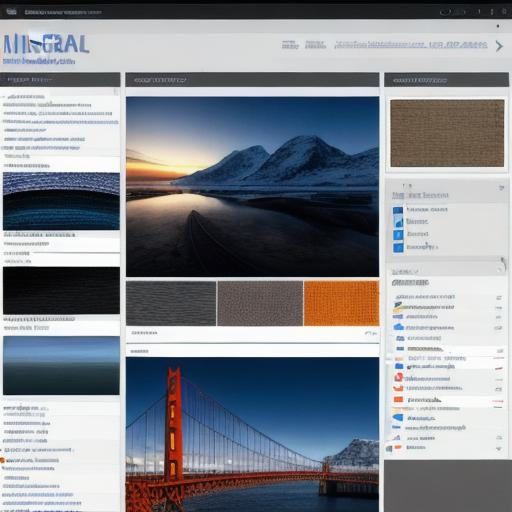Unity Design, a powerful and versatile suite of tools developed by Unity Technologies, is revolutionizing the way web developers create immersive, interactive experiences for their users. This advanced platform merges the worlds of 3D animation, game development, and real-time visualization, making it an essential asset for modern web projects.
Definition and Key Features
At its core, Unity Design is a cross-platform engine that enables developers to build and deploy applications that combine rich visuals, interactive elements, and engaging user experiences.
Some of its most notable features include:
- Real-time 3D rendering: Offers stunning graphics with real-time lighting, shadows, reflections, and post-processing effects.
- Intuitive editor: Provides an easy-to-use interface for designing, prototyping, and optimizing interactive experiences.
- Asset store: Access to a vast library of pre-built assets, including 3D models, textures, and scripts, which can be easily customized and integrated into projects.
- Cross-platform compatibility: Supports development for various platforms, including WebGL, iOS, Android, and Windows, among others.
- Built-in physics engine: Enables realistic simulations of physical phenomena in the virtual world.
- Dynamic scripting: Supports C and JavaScript, enabling developers to create complex, custom logic.
Industries Leveraging Unity Design
Unity Design has become a game changer across various industries, offering innovative solutions for web development projects that demand high-quality visuals and interactive experiences.
Here are some industries where Unity Design is making an impact:
- Education: Unity Design provides educators with the ability to create immersive virtual environments for students, enabling them to learn through engaging and interactive simulations.
- Architecture and Engineering: With real-time 3D visualization capabilities, architects and engineers can use Unity Design to create realistic models of buildings and structures, allowing stakeholders to explore and interact with their designs in detail.
- Healthcare and Life Sciences: In healthcare, Unity Design can be used for creating virtual training simulations, enabling medical professionals to practice procedures and treatments in a risk-free environment.

- Media and Entertainment: The platform’s advanced visual capabilities make it an excellent choice for developing immersive experiences such as interactive stories, 360° videos, and virtual tours.
- Marketing and Advertising: Unity Design can help create eye-catching, interactive advertisements that engage users, providing a more memorable brand experience.

- Gaming: With its robust features and extensive community support, Unity Design is the go-to choice for developing high-quality games for various platforms.
Summary
Unity Design represents a significant leap forward in web development, offering a powerful and versatile platform that bridges the gap between art and technology. Its rich visual capabilities and interactive features make it an ideal choice for industries that demand engaging and immersive experiences. By leveraging Unity Design, developers can create captivating applications across various domains, from education to healthcare, media, marketing, and entertainment.
So, whether you’re building a game, a virtual tour, or a training simulation, consider using Unity Design as your foundation for creating unforgettable web experiences.
